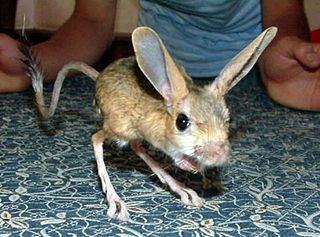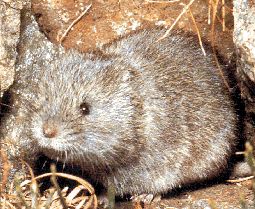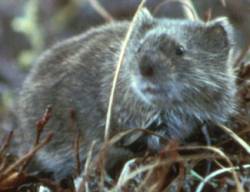
Jerboas are the members of the family Dipodidae. They are hopping desert rodents found throughout North Africa and Asia. They tend to live in hot deserts.

The four-toed jerboa is a rodent of the family Dipodidae and genus Scarturus that has four digits. Four-toed jerboas are native to Egypt and Libya. They live in coastal salt marshes and dry deserts.

Zapodidae, the jumping mice, is a family of mouse-like rodents in North America and China.

Dipodoidea is a superfamily of rodents, also known as dipodoids, found across the Northern Hemisphere. This superfamily includes over 50 species among the 16 genera in 3 families. They include the jerboas, jumping mice, and birch mice. Different species are found in grassland, deserts, and forests. They are all capable of saltation, a feature that is most highly evolved in the desert-dwelling jerboas.

The long-eared jerboa is a nocturnal mouse-like rodent with a long tail, long hind legs for jumping, and exceptionally large ears. It is distinct enough that authorities consider it to be the only member of both its genus, Euchoreutes, and subfamily, Euchoreutinae.

Alticola is a genus of rodent in the family Cricetidae.

Chionomys is a genus of rodent in the family Cricetidae.

The small five-toed jerboa is a rodent of the family Dipodidae and genus Scarturus, that has five digits. They are hopping rodents of the rocky deserts in Asia. They have been found in Afghanistan, Armenia, Azerbaijan, China, Georgia, Iran, Kazakhstan, Pakistan, Russia, Tajikistan, Turkey, and Turkmenistan. They have long hind feet, short forelimbs, and walk upright. The jerboa body length ranges from 5–15 cm and has a tail ranging from 7–25 cm. They have large ears in comparison to their body size and a large tail. The tail assists and serves as support when the jerboa is standing upright. These hopping rodents can reach a speed up to 48 km/h. The forelimbs of the jerboa serve as a pair of hands for feeding, grooming, etc. The male jerboa is usually larger in size and weight in comparison to the female jerboa. The pelt of the jerboa is either silky or velvety in texture and light in color, the coloration helps camouflage into surroundings to avoid predators. "Its coloration varies from sandy or buff to dark russet or black with pale under parts and a white strip on the hip”.
The Euphrates jerboa is a rodent of the family Dipodidae and genus Scarturus. They are characteristically known as hopping rodents. They have been found in Pakistan, Afghanistan, Iran, Iraq, Jordan, Kuwait, Saudi Arabia, Syria, and also occurs very marginally in southeastern Turkey. The Euphrates jerboa's natural habitats are subtropical or tropical dry lowland grassland, shrubland, and hot deserts.
Vinogradov's jerboa is a species of rodent in the family Dipodidae. It is found in Kazakhstan, Kyrgyzstan, Tajikistan, and Uzbekistan.

The five-toed pygmy jerboa is a species of rodent in the family Dipodidae. It is monotypic within the genus Cardiocranius. It is found in China, Kazakhstan, and Mongolia.
The comb-toed jerboa is a species of rodent in the family Dipodidae. It is monotypic within the genus Paradipus. It is found in Iran, Kazakhstan, Turkmenistan, and Uzbekistan.

The Baluchistan pygmy jerboa or dwarf three-toed jerboa, is a species of rodent in the family Dipodidae. It is the only species in the genus Salpingotulus. Adults average only 4.3 cm (1.7 in) in head and body length, with the tail averaging 8 cm (3.1 in). Adult females weigh 3.2 g (0.11 oz). It is currently considered to be endemic to Pakistan. In the 1999 Guinness Book of Records, it was listed as tied for the smallest rodent in the world with the northern pygmy mouse.
Andrews's three-toed jerboa, or the Mongolian jerboa, is a species of rodent in the family Dipodidae. It is found in China and Mongolia.

Allactaginae is a subfamily of rodents.

Alexandromys is a genus of voles in the subfamily Arvicolinae, formerly a subgenus of the genus Microtus. Species in this genus are:

Williams's jerboa is a species of jerboas native to Afghanistan, Armenia, Azerbaijan, Iran and Turkey.
Paradipodinae is a monotypic subfamily of Dipodidae, consisting solely of the comb-toed jerboa.


















